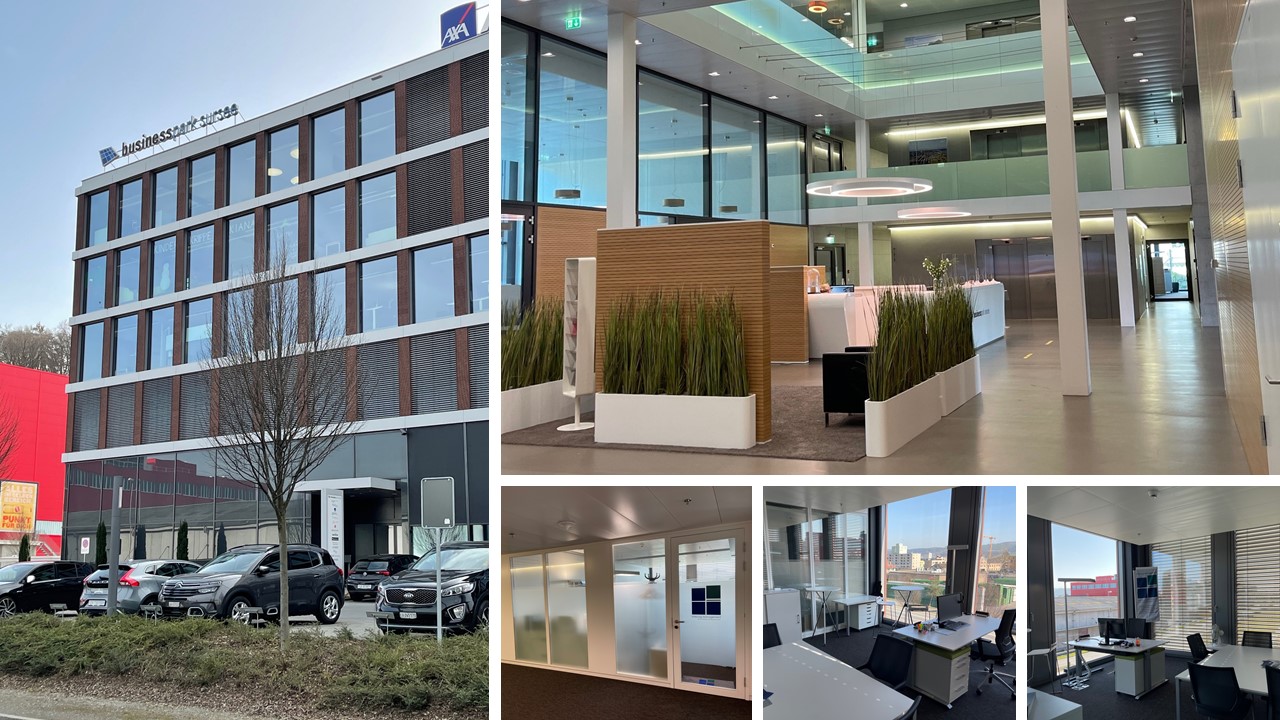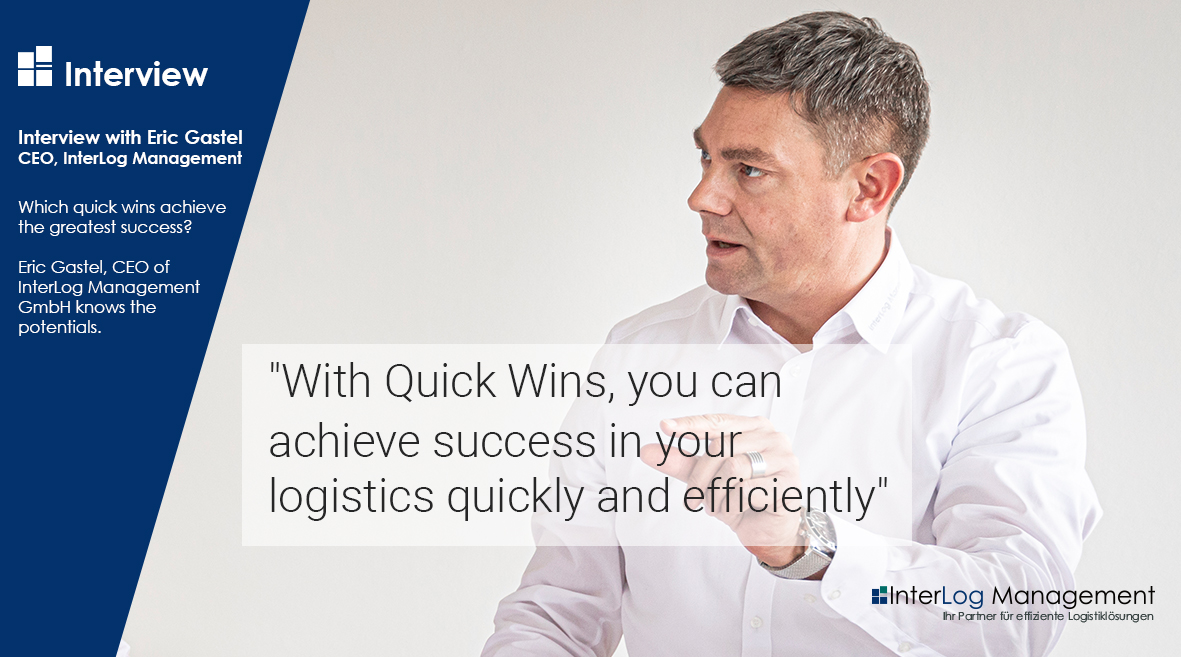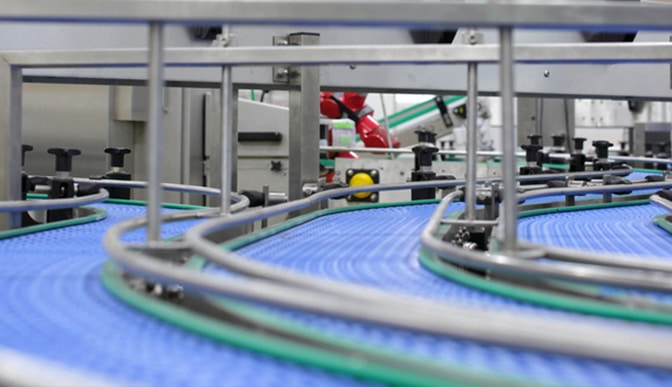The optimal automation for your warehouse
New plant planning, retrofitting and plant modernisation during operation are our core competence
Automated logistics processes or warehouse automation are becoming increasingly important within logistics in the course of digitalisation. Automation technology no longer only includes an automated high-bay warehouse or small parts warehouse. Rather, the goal is to network logistical processes in conjunction with the warehouse technology used in such a way that a wide variety of automated solutions communicate with each other. In this way, the entire material flow, from incoming goods to storage and order picking to outgoing goods, can be routed fully automatically through a logistics operation without the need for human interaction.
Without integrated logistics software, such technically sophisticated systems cannot be controlled efficiently and effectively. An agile material flow system in combination with an integrated warehouse management system is usually the basic prerequisite for such a highly automated process landscape.
Our consulting focus in warehouse automation
Automation of logistics processes
Plant modernisation & retrofit
Automation technologies and automation systems
Within our consulting and planning we consider modern storage technologies and storage techniques
Regardless of which automation technologies and / or automation systems are used, a careful examination and automation evaluation should be carried out before procurement. Oversized automation solutions can limit the flexibility of logistics processing and lead to high costs. Used sensibly, however, automation offers the possibility of reducing weaknesses in manual processes and increasing productivity.
Driverless transport systems
Control technology / mechanics & electronics
Case picking through robotics
Highly dynamic shuttle systems
Materials handling
Automatic high-bay or small parts warehouse
Automate, digitalise and network logistics processes
The digital networking of automated high-bay and small-parts warehouses with pallet and container conveyor technology as well as driverless transport systems, which serve the physical areas from goods receipt to order picking to goods issue unmanned, form the basis of agile and efficient logistics processes.
We check and evaluate the performance of the warehouse technology you use and define the level of optimal warehouse automation together with you on the basis of your article, order and performance figures.
For any automation in the field of logistics, a corresponding IT system landscape is necessary. This should definitely be checked, analysed and possibly adapted within the warehouse automation or warehouse modernisation.
Goals of warehouse automation
- Reduction of operating and logistics costs
- Optimization of communication channels
- Effective and efficient utilization of resources
- Increase in productivity
- Reduction of process throughput times
- Optimization of space utilization
- Increase of on-time delivery performance
- Inventory optimization
- Reduction of the complaint rate
- Increasing the safety of the facilities and for the personnel
Plant modernisation & Retrofit
When logistics facilities are getting on in years, it is not always necessary to evaluate and install a new facility straight away. Often a retrofit, i.e. a system modernisation, is sufficient to integrate new technologies and establish modified processes. In addition, the efficiency of the plant can be secured for another 15 to 20 years.
In the area of plant modernisation / retrofitting, there is an increasing focus on the integral networking of automation technology. In the case of plant modernisations, in which the networking of various warehouse technologies is an essential part of the project, the challenge lies in particular in carrying out the modernisation project during ongoing operation. This means that the system modernisation is carried out parallel to the regular daily business of the respective company.
Together with you or on your behalf, we plan and implement your system modernisation in such a way that you can continue your daily business without any significant restrictions.
Advantages of modernising your logistics facility
- Lower investment costs compared to new procurement
- Increasing the service life of the system — up to 20 ‑30 years
- Use of modern control technology including sensors and drive technology
- Safe production of spare parts procurement
- Optimum connection to modern warehouse management systems
- Increase in plant safety
The path to modernisation
Before you start with modernisation within your logistics, the requirements should first be precisely defined. Planning for a retrofit always requires an intensive inventory of the existing equipment. The aim is to determine the requirements for modernisation as precisely as possible and to avoid risks during implementation.
We will gladly advise you on your modernisation project and offer you our support from the inventory to the implementation and commissioning during operation.
Our established approach to the modernisation of logistics facilities and warehouse technology:
1. Inventory on site
2. Definition of the requirements
3. Potential verification
4. Tender management
5. Implementation planning
6. Start of modernisation
Do you know your automation potential?
Learn more about our warehouse automation / digitalisation
New plant planning, retrofitting and plant modernisations
Questions and answers about warehouse automation
Should processes be fully automated or only partially automated? Which logistics systems are the right ones for the type of business? What types of picking techniques can be used? How do the costs relate to the benefits? How sustainable is the chosen level of automation in relation to its future viability! We analyse the company data by means of a coordinated data model. Based on this, we can define the appropriate systems and their sustainability.
Automated warehouses are not all the same. There are different types of automated warehouses. Accordingly, the advantages of automation cannot be determined across the board.
However, oversized automation solutions can limit the flexibility of logistics processing and lead to high costs.
A sensibly implemented automation, regardless of the type, always pursues the goal of reducing the weaknesses of manual processes and increasing productivity.
The investment costs naturally depend on the extent to which you automate your warehouse. Together with you, we plan the most optimal automation solution for you from an economic and strategic point of view.
Storage systems that have already been in operation for around 15 to 20 years should be modernised under the aspects of energy efficiency, sustainability and process optimisation. Occupational safety also plays a decisive role. Systems that are getting on in years may no longer meet the safety standards according to the legal basis. This should definitely be checked and assessed. Ultimately, the company / employer and also the manager bear the responsibility for the safety of the employees.
The investment costs naturally depend on the extent to which you modernise your plants and systems. You will receive a detailed breakdown of the investment costs and a return-on-investment calculation. As a basis, we carry out a process potential analysis in advance. Our planned logistics facilities and logistics systems are modern, future-oriented and economically profitable.
Current topics

Relocation to the Sursee Business Park (CH)
Our Swiss team has moved. As of now, the Swiss branch of InterLog Management GmbH can be reached at the new company address “Allee 1B (Businesspark Sursee) in 6210 Sursee”! “The Businesspark Sursee offers

Quick wins in logistics
How can you increase your process efficiency with hidden quick wins? Interview with Eric Gastel, CEO of the logistics consultancy InterLog Management. Logistics offers numerous optimisation potentials like hardly any other area, since the

Detailed concept for process automation [Hans Kupfer & Sohn GmbH & Co. KG]
Food production and especially the production of meat products in Germany are characterised by high competitive pressure as well as high price pressure within the food retail sector. The resulting low profit margins
